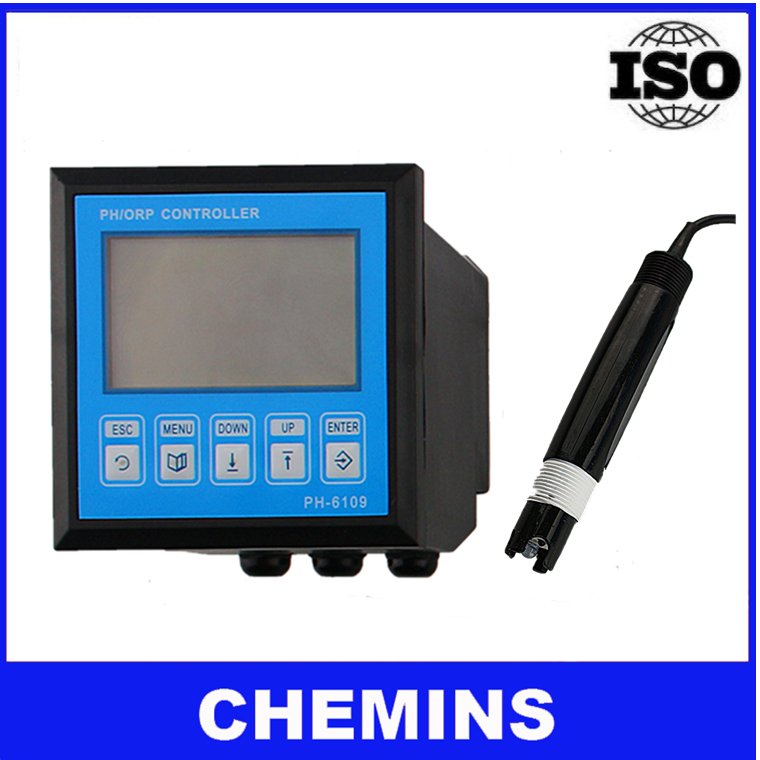Product Description
DDM200 series conductivity
transmitter


DDM seriesindustry conductivity transmitter
is a kind of process meter which measure the aqueous solutions
conductivity in industrial processes.
Conductivity is an important indicator of water purity. The amount
of impurities of boiler water, demonized water, distilled water and
wastewater is measured by conductivity. The concentration of acids,
alkali and salt solution in various chemical liquid, and the
dissolved oxygen in boiler water can all be measured by
conductivity.
DDM200 series conductivity transmitter is the economic model, it
integrated the industrial sensor, transmitter and instruction meter
as a whole, innovatively designed and can work reliably.
- With 4~20mA or Modbus/RTU(RS485), can be easily connect to
the control system such as PLC and DCS.
- Modular electronic unit is reliable with dust proof and water
proof. With strong anti interference capability.
- Sensor and other parts is connect by VP or BNC header, easy
for maintenance.
- Digital display optional, easy and intuitive.

|
Measurement scale
|
0~20uS/cm, 0~200uS/cm,
0~2000uS/cm, 0~200mS/cm, 0~400mS/cm, 0~600mS/cm
|
|
Accuracy
|
0.1μS/cm±1Digit
|
|
Drift
|
≤ 0.5% / 24 Hour
|
|
Load characteristics
|
For
4~20mA,0~600Ω,16-38VDC
|
|
Operating pressure
|
< 0.6MPa
|
|
Medium temperature
|
-10 ~ 80℃, 80
~180℃
|
|
Environmental conditions
|
Ambient temperature: -10 ~ 55
℃
|
|
Humidity: ≤ 95%
|
-
The concept of conductance and conductivity
Electrolyte solution is like the metal conductor, is a good
conductor for electricity. Therefore, current flows through the
electrolyte, there must be resistance effect, and in accordance
with Ohm's law. However, the resistance temperature characteristics
of liquid is contrast with metal conductor, its temperature
characteristic is negative. As distinguished from the metal
conductor, the conductance of electrolyte solution is expressed by
the reciprocal of the resistance, and the conductivity is the
reciprocal of the resistivity. If G represent conductance, S
represent conductivity, then there is the following formula:
Where:
R ─ Liquid resistance,
Ω.
ρ ─ Resistivity,
Ω · cm.
L ─Distance between plate of the
electrode,cm.
A ─ Electrode plates
cross-sectional area, cm2
.
G ─ Conductance, S
(1S = 1Ω-1).
S ─ Conductivity, S
·
cm-1 or (
Ω · cm)-1
k ─ Electrode constant,
cm-1.
When L = 1cm and A = 1cm2, G = S. Means that 1 cm3 volume of the
solutions conductance is conductivity. If fill 1 molars solution in
the 1 cm3 volume, then its called molar conductivity.
-
The conductivity measurement
Two mutually insulated electrode formed the conductivity cell,
in which, fill with target medium. Pass through alternating current
with constant voltage, to form the electrical circuit. Fixed
voltage and electrode size, the loop current I is a function of the
conductivity:
I0 = f (s) = K · S + d
Where K is the slope of linear equation, and related with power
supply parameter of the conductivity cell. Change the power supply
parameters, you can change the slope (measuring range). Linear
equation fixed the range of output current, so when S = 0, the
constant d can be calculated, which can determine the current value
that flowing through the target medium. So the conductivity can be
measured by current. See figure below.
In the electrolyte solution, the larger of the ion concentration
per unit volume, the greater of the conductivity; The higher of the
valence of ions, the greater of the conductivity; The faster of the
ion mobility, the greater of the conductivity. The conductivity of
the absolutely pure water is 5.5 × 10-8 S/cm (25℃). The
relationship of conductivity for different aqueous solution is as
follows:
| Country: |
China |
| Model No: |
DDM200
|
| FOB Price: |
199 ~ 499 / Piece ( Negotiable ) (Negotiable)
Get Latest Price
|
| Place of Origin: |
- |
| Price for Minimum Order: |
199 per Piece |
| Minimum Order Quantity: |
1 Piece |
| Packaging Detail: |
Carton. |
| Delivery Time: |
In 15 days after payment. |
| Supplying Ability: |
1000 Piece per Month |
| Payment Type: |
PayPal, Western Union, T/T |
| Product Group : |
Water Analysis
|





